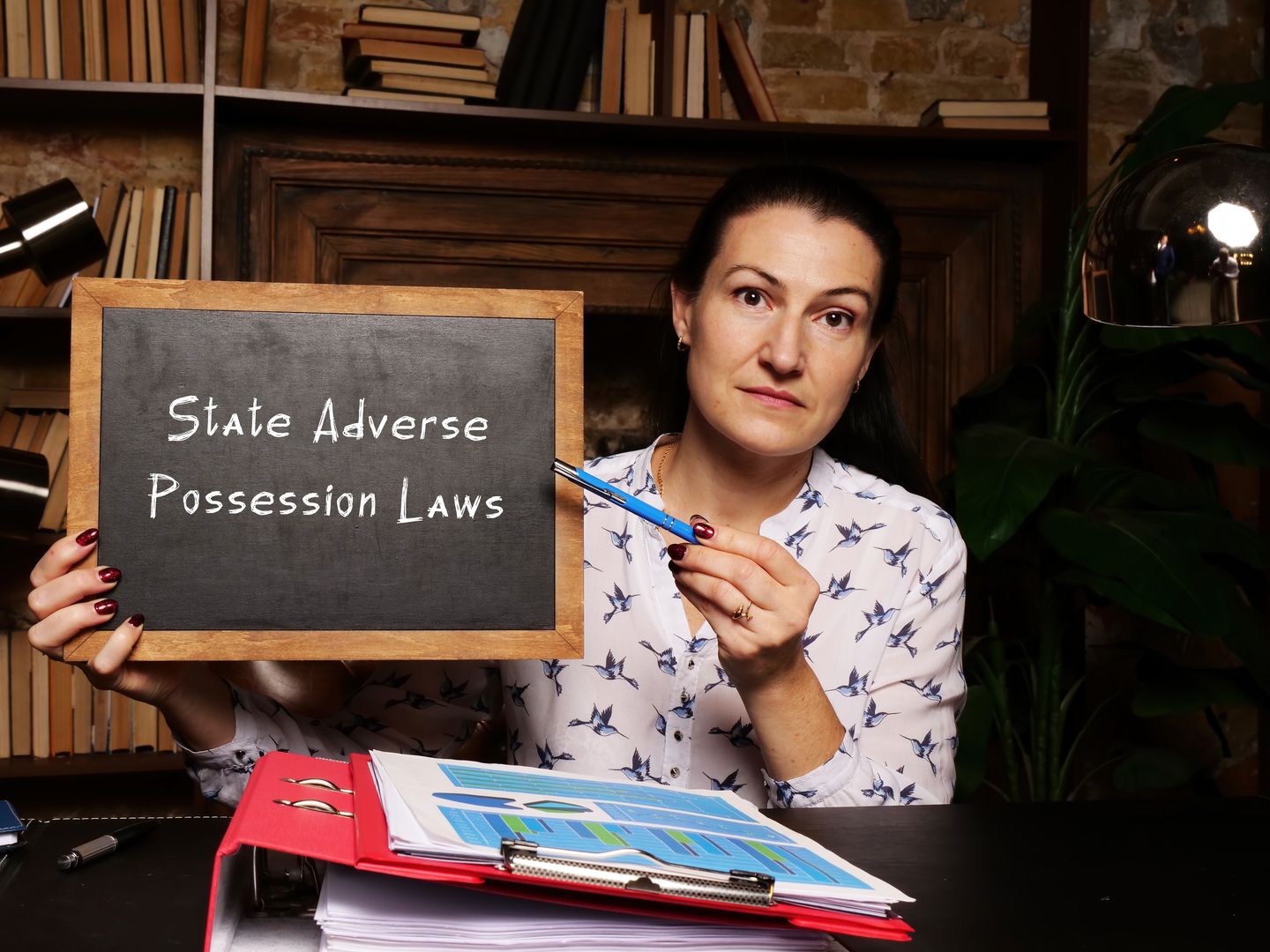
As Real Estate lawyer I find the concept of adverse possession in Florida particularly intriguing. Adverse possession is a legal principle that allows a person to claim ownership of a property if they have occupied it for a certain period of time, under specific conditions. In other words, they are gaining title and ownership to a property without paying for it.
The Fundamentals of Florida Adverse Possession
 To acquire title to property via adverse possession in Florida, a claimant must generally demonstrate continuous, open, exclusive, and notorious possession of the property for seven years. This possession must be “adverse” or “hostile” to the true owner, a concept that often becomes a point of contention in adverse possession cases.
To acquire title to property via adverse possession in Florida, a claimant must generally demonstrate continuous, open, exclusive, and notorious possession of the property for seven years. This possession must be “adverse” or “hostile” to the true owner, a concept that often becomes a point of contention in adverse possession cases.
The Two Paths to Adverse Possession
Florida law outlines two primary methods of acquiring title by adverse possession: with color of title (under § 95.16) and without color of title (under § 95.18). Each method has its unique set of requirements and legal nuances.
Adverse Possession with Color of Title (§ 95.16)
Under § 95.16, a claimant with color of title must show continuous possession for seven years. Additionally, the property must be described in a written instrument recorded in official county records. The importance of a written instrument with a legally sufficient description of the property cannot be overstated—it is a vital prerequisite to any claim of adverse possession with color of title.
95.16 Real property actions; adverse possession under color of title.—
(1) When the occupant, or those under whom the occupant claims, entered into possession of real property under a claim of title exclusive of any other right, founding the claim on a written instrument as being a conveyance of the property, or on a decree or judgment, and has for 7 years been in continued possession of the property included in the instrument, decree, or judgment, the property is held adversely. If the property is divided into lots, the possession of one lot shall not be deemed a possession of any other lot of the same tract. Adverse possession commencing after December 31, 1945, shall not be deemed adverse possession under color of title until the instrument upon which the claim of title is founded is recorded in the office of the clerk of the circuit court of the county where the property is located.
(2) For the purpose of this section, property is deemed possessed in any of the following cases:
(a) When it has been usually cultivated or improved.
(b) When it has been protected by a substantial enclosure. All land protected by the enclosure must be included within the description of the property in the written instrument, judgment, or decree. If only a portion of the land protected by the enclosure is included within the description of the property in the written instrument, judgment, or decree, only that portion is deemed possessed.
(c) When, although not enclosed, it has been used for the supply of fuel or fencing timber for husbandry or for the ordinary use of the occupant.
(d) When a known lot or single farm has been partly improved, the part that has not been cleared or enclosed according to the usual custom of the county is to be considered as occupied for the same length of time as the part improved or cultivated.
Florida Statute 95.16 outlines the conditions under which adverse possession under color of title can be claimed for real property.
- The occupant, or those the occupant claims under, must have entered into possession of the property under a claim of title exclusive of any other right. This claim must be founded on a written instrument, decree, or judgment that is seen as a conveyance of the property.
- The occupant must have been in continued possession of the property for seven years. If the property is divided into lots, possession of one lot does not imply possession of any other lot in the same tract.
- For adverse possession claims commencing after December 31, 1945, the instrument upon which the claim of title is founded must be recorded in the office of the clerk of the circuit court of the county where the property is located.
The statute also provides four scenarios under which property is deemed possessed:
a) The property has been usually cultivated or improved. b) The property has been protected by a substantial enclosure. All land within the enclosure must be included in the written instrument, judgment, or decree. If only a portion of the enclosed land is included in the document, only that portion is deemed possessed. c) The property, even if not enclosed, has been used for the supply of fuel or fencing timber for husbandry or for the ordinary use of the occupant. d) If a known lot or single farm has been partly improved, the unimproved part is considered as occupied for the same length of time as the improved or cultivated part, according to the usual custom of the county.
Adverse Possession without Color of Title (§ 95.18)
On the other hand, § 95.18 outlines the requirements for a claimant without color of title. In this case, the claimant must show open, continuous, actual, and hostile possession for seven years. Furthermore, the claimant must pay all taxes and matured installments of special improvement liens levied against the property. The claimant must also make a return of the property by proper legal description to the property appraiser of the county where it is located. Failure to pay taxes can defeat a claim of adverse possession without color of title.
95.18 Real property actions; adverse possession without color of title.—
(1) When the possessor has been in actual continued possession of real property for 7 years under a claim of title exclusive of any other right, but not founded on a written instrument, judgment, or decree, or when those under whom the possessor claims meet these criteria, the property actually possessed is held adversely if the person claiming adverse possession:
(a) Paid, subject to s. 197.3335, all outstanding taxes and matured installments of special improvement liens levied against the property by the state, county, and municipality within 1 year after entering into possession;
(b) Made a return, as required under subsection (3), of the property by proper legal description to the property appraiser of the county where it is located within 30 days after complying with paragraph (a); and
(c) Has subsequently paid, subject to s. 197.3335, all taxes and matured installments of special improvement liens levied against the property by the state, county, and municipality for all remaining years necessary to establish a claim of adverse possession.
(2) For the purpose of this section, property is deemed to be possessed if the property has been:
(a) Protected by substantial enclosure; or
(b) Cultivated, maintained, or improved in a usual manner.
(3) A person claiming adverse possession under this section must make a return of the property by providing to the property appraiser a uniform return on a form provided by the Department of Revenue. The return must include all of the following:
(a) The name and address of the person claiming adverse possession.
(b) The date that the person claiming adverse possession entered into possession of the property.
(c) A full and complete legal description of the property that is subject to the adverse possession claim.
(d) A notarized attestation clause that states:
UNDER PENALTY OF PERJURY, I DECLARE THAT I HAVE READ THE FOREGOING RETURN AND THAT THE FACTS STATED IN IT ARE TRUE AND CORRECT. I FURTHER ACKNOWLEDGE THAT THE RETURN DOES NOT CREATE ANY INTEREST ENFORCEABLE BY LAW IN THE DESCRIBED PROPERTY.
(e) A description of the use of the property by the person claiming adverse possession.
(f) A receipt to be completed by the property appraiser.
(g) Dates of payment by the possessor of all outstanding taxes and matured installments of special improvement liens levied against the property by the state, county, or municipality under paragraph (1)(a).
(h) The following notice provision at the top of the first page, printed in at least 12-point uppercase and boldfaced type:
THIS RETURN DOES NOT CREATE ANY INTEREST ENFORCEABLE BY LAW IN THE DESCRIBED PROPERTY.
The property appraiser shall refuse to accept a return if it does not comply with this subsection. The executive director of the Department of Revenue is authorized, and all conditions are deemed met, to adopt emergency rules under ss. 120.536(1) and 120.54(4) for the purpose of implementing this subsection. The emergency rules shall remain in effect for 6 months after adoption and may be renewed during the pendency of procedures to adopt rules addressing the subject of the emergency rules.
(4) Upon the submission of a return, the property appraiser shall:
(a) Send, via regular mail, a copy of the return to the owner of record of the property that is subject to the adverse possession claim, as identified by the property appraiser’s records.
(b) Inform the owner of record that, under s. 197.3335, any tax payment made by the owner of record before April 1 following the year in which the tax is assessed will have priority over any tax payment made by an adverse possessor.
(c) Add a notation at the beginning of the first line of the legal description on the tax roll that an adverse possession claim has been submitted.
(d) Maintain the return in the property appraiser’s records.
(5)(a) If a person makes a claim of adverse possession under this section against a portion of a parcel of property identified by a unique parcel identification number in the property appraiser’s records:
1. The person claiming adverse possession shall include in the return submitted under subsection (3) a full and complete legal description of the property sufficient to enable the property appraiser to identify the portion of the property subject to the adverse possession claim.
2. The property appraiser may refuse to accept the return if the portion of the property subject to the claim cannot be identified by the legal description provided in the return, and the person claiming adverse possession must obtain a survey of the portion of the property subject to the claim in order to submit the return.
(b) Upon submission of the return, the property appraiser shall follow the procedures under subsection (4), and may not create a unique parcel identification number for the portion of property subject to the claim.
(c) The property appraiser shall assign a fair and just value to the portion of the property, as provided in s. 193.011, and provide this value to the tax collector to facilitate tax payment under s. 197.3335(3).
(6)(a) If a person makes a claim of adverse possession under this section against property to which the property appraiser has not assigned a parcel identification number:
1. The person claiming adverse possession must include in the return submitted under subsection (3) a full and complete legal description of the property which is sufficient to enable the property appraiser to identify the property subject to the adverse possession claim.
2. The property appraiser may refuse to accept a return if the property subject to the claim cannot be identified by the legal description provided in the return, and the person claiming adverse possession must obtain a survey of the property subject to the claim in order to submit the return.
(b) Upon submission of the return, the property appraiser shall:
1. Assign a parcel identification number to the property and assign a fair and just value to the property as provided in s. 193.011;
2. Add a notation at the beginning of the first line of the legal description on the tax roll that an adverse possession claim has been submitted; and
3. Maintain the return in the property appraiser’s records.
(7) A property appraiser must remove the notation to the legal description on the tax roll that an adverse possession claim has been submitted and shall remove the return from the property appraiser’s records if:
(a) The person claiming adverse possession notifies the property appraiser in writing that the adverse possession claim is withdrawn;
(b) The owner of record provides a certified copy of a court order, entered after the date the return was submitted to the property appraiser, establishing title in the owner of record;
(c) The property appraiser receives a certified copy of a recorded deed, filed after the date of the submission of the return, from the person claiming adverse possession to the owner of record transferring title of property along with a legal description describing the same property subject to the adverse possession claim; or
(d) The owner of record or the tax collector provides to the property appraiser a receipt demonstrating that the owner of record has paid the annual tax assessment for the property subject to the adverse possession claim during the period that the person is claiming adverse possession.
(8) The property appraiser shall include a clear and obvious notation in the legal description of the parcel information of any public searchable property database maintained by the property appraiser that an adverse possession return has been submitted to the property appraiser for a particular parcel.
(9) A person who occupies or attempts to occupy a residential structure solely by claim of adverse possession under this section prior to making a return as required under subsection (3), commits trespass under s. 810.08.
(10) A person who occupies or attempts to occupy a residential structure solely by claim of adverse possession under this section and offers the property for lease to another commits theft under s. 812.014.
Florida Statute 95.18 outlines the conditions for claiming adverse possession without color of title for real property.
- The possessor, or those under whom the possessor claims, must have been in actual continued possession of the property for seven years under a claim of title exclusive of any other right, but not founded on a written instrument, judgment, or decree.
- The person claiming adverse possession must have paid all outstanding taxes and matured installments of special improvement liens levied against the property by the state, county, and municipality within one year after entering into possession.
- The person claiming adverse possession must make a return of the property by proper legal description to the property appraiser of the county where it is located within 30 days after complying with the tax payment requirement.
- The person claiming adverse possession must have subsequently paid all taxes and matured installments of special improvement liens levied against the property by the state, county, and municipality for all remaining years necessary to establish a claim of adverse possession.
The statute also provides two scenarios under which property is deemed to be possessed:
a) The property has been protected by a substantial enclosure. b) The property has been cultivated, maintained, or improved in a usual manner.
The statute also outlines the requirements for a person claiming adverse possession to make a return of the property to the property appraiser, including providing a full and complete legal description of the property, the name and address of the person claiming adverse possession, the date that the person claiming adverse possession entered into possession of the property, and a notarized attestation clause.
The statute further outlines the procedures the property appraiser must follow upon the submission of a return, including sending a copy of the return to the owner of record of the property, informing the owner of record about tax payment priority, adding a notation to the legal description on the tax roll, and maintaining the return in the property appraiser’s records.
The statute also provides conditions under which a property appraiser must remove the notation to the legal description on the tax roll that an adverse possession claim has been submitted and remove the return from the property appraiser’s records.
Finally, the statute states that a person who occupies or attempts to occupy a residential structure solely by claim of adverse possession under this section prior to making a return as required commits trespass, and a person who occupies or attempts to occupy a residential structure solely by claim of adverse possession under this section and offers the property for lease to another commits theft.
A Closer Look at Case Law
Case law provides further insight into the application of these statutes. For instance, in “Batterbee v. Roderick, 278 So. 3d 882 (Fla. Dist. Ct. App. 2019)”, the court held that the claimant’s possession was not hostile until the true owner learned of the claimant’s claim of ownership. However, the court also stated that if the claimant’s possession is open and notorious under claim of title, it is sufficient in its character, whether the true owner knew the facts or not.
In “Seton v. Swann, 650 So. 2d 35 (Fla. 1995)”, the court found that a party must meet two requirements to acquire title through adverse possession by color of title under section 95.16: First, the property must be described in a written instrument recorded in official county records, and, second, the property must be possessed continuously for seven years.
“Meyer v. Law, 287 So. 2d 37 (Fla. 1973)” provides a comprehensive overview of the requirements for acquiring title to property via adverse possession in Florida, with or without color of title. The court emphasized the necessity of seven years of open, continuous, actual possession, hostile to all who would challenge such possession, and the payment of all taxes for the seven-year period.
“Frazier v. Goszczynski, 161 So. 3d 542 (Fla. Dist. Ct. App. 2014)” further distinguishes between adverse possession under color of title and without color of title, highlighting the different statutory claims occupying separate sections in the Florida Statutes, distinguished mainly by the presence or absence of the color of title element.
We Love Real Estate Litigation
Understanding Florida’s adverse possession laws can be challenging due to the legal complexities and nuances involved. However, with a thorough understanding of the statutes and relevant case law, it becomes easier to navigate this legal landscape. Whether you’re a property owner, a potential claimant, or simply interested in the law, it’s crucial to understand these concepts and how they apply in real-world scenarios.
If you find yourself in a situation where you need to understand or assert your rights under Florida’s adverse possession laws, it’s crucial to have experienced legal counsel on your side. Zoecklein Law is well-versed in these matters and can provide the guidance and representation you need. Don’t try to navigate these complex legal waters alone. Reach out to Zoecklein Law today for a consultation and let us help you understand and assert your rights. Remember, knowledge is power, and in the realm of Florida adverse possession, that power can make all the difference.
-Brice Zoecklein, Esq.
813-501-5071
















